
|
 |
Hospital eTool
Heliport Module
Click on the area for more specific information.
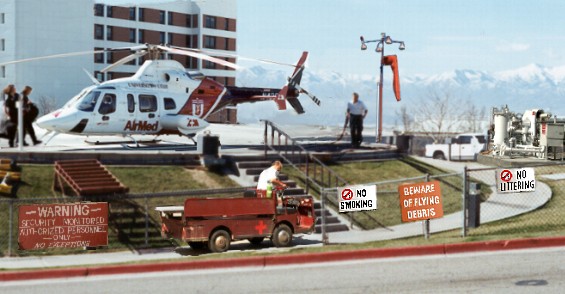
|
Common Safety and health issues:
 Equipment Hazards
Equipment Hazards
|
Potential Hazard
Staff exposure to equipment hazards associated with helicopters such as the tail rotor and the main rotor system (helicopter blades).
These blades can injure or kill an unaware or uneducated staff member. Hats, loose clothing, gloves etc., can be sucked into the
engine air intake fans and cause the helicopter to malfunction and potentially crash.
|
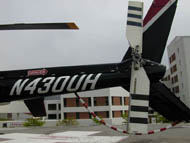 |
Possible Solutions

|
- Limit access in this area to staff trained in helicopter equipment hazards.
- Establish safe work practices such as:
- Do not administer CPR to patients on transport carts while the carts are under the helicopter blade. This may elevate height of staff member to
the extent that staff member could be hit by the helicopter blades.
- Properly secure all items such as loose clothing, hats, gloves, scarves, while in the helicopter area.
- Avoid the tail rotor area and helicopter blade area.
|
Additional Information:
|
- [1910.183(g)],
Helicopters, Materials Handling and Storage.
- Certification of airborne medical transport programs is provided by the Commission of Accreditation of Medical Transport Systems
(CAMTS).
- The
Federal Aviation Administration (FAA) governs flight safety guidelines.
|
|
|
Noise/Communication
|
Potential Hazard
Exposure of staff to potential hearing loss, hearing impairment, elevated blood pressure levels and other health hazards from exposure
to the loud sounds of the helicopter in operation. Elevated noise levels pose an additional threat to workers if they are unable to communicate
or warn each other of potential dangers or occurring situations.
|
 |
Possible Solutions
A safety and health program that recognizes and addresses the hazards created by noise exposure.
- OSHA's 1910.95 Occupational
Noise Exposure Standard requires feasible implementation of administrative and Heliport controls whenever employee noise exposures
exceed 90 dBA (8-hour time-weighted average (TWA).
- Some example of Heliport controls to help prevent noise exposure include:
- Provide appropriate equipment to protect the hearing of staff.
- Use aviation helmets that include special hearing protection and communication systems to enable staff to communicate through the
helmets.
 For additional information, see HealthCare Wide Hazards -
Noise.
For additional information, see HealthCare Wide Hazards -
Noise.
Additional Information:
|
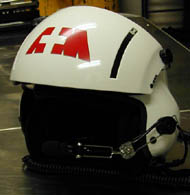
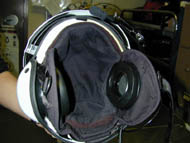 |
|
|
Debris on Helipad
|
Potential Hazard
|
High winds generated by the helicopter blades can throw loose items or trash etc., at employees and cause them injury.
|
Possible Solutions

|
- Housekeeping. Good housekeeping shall be maintained in all helicopter loading and unloading areas
[1910.183(g)].
- Keep helipad area free from garbage, litter, or other debris.
- All items such as loose clothing, hats, gloves, scarves, must be properly secured before entering the helipad area.
- Use appropriate eye and face protection.
|
|
|
Ergonomics
|
Potential Hazard
Possible musculoskeletal disorders from lifting and/or lifting and twisting patients as they are moved to and
from helicopter to carts or gurneys.
Possible Solutions
|
- Use ergonomic equipment to minimize employee lifting and/or twisting.
- Provide a moveable and adjustable stretcher inside helicopter to avoid employee twisting and minimize lifting.
|
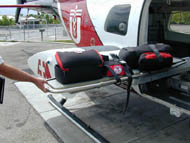
|

|
- Provide a cart that drives patient to emergency room so employees do not have to carry the patient by hand.
|
 |
|
 Fueling Hazards
Fueling Hazards
|
Potential Hazard
Employee exposure to fueling hazards such as fire or explosions that can occur from sparks or matches in the helipad area.
Possible Solutions

|
-
No smoking allowed in helipad area.
-
Grounding cable attached to helicopter while fueling to prevent sparks.
|
 |
|
|

